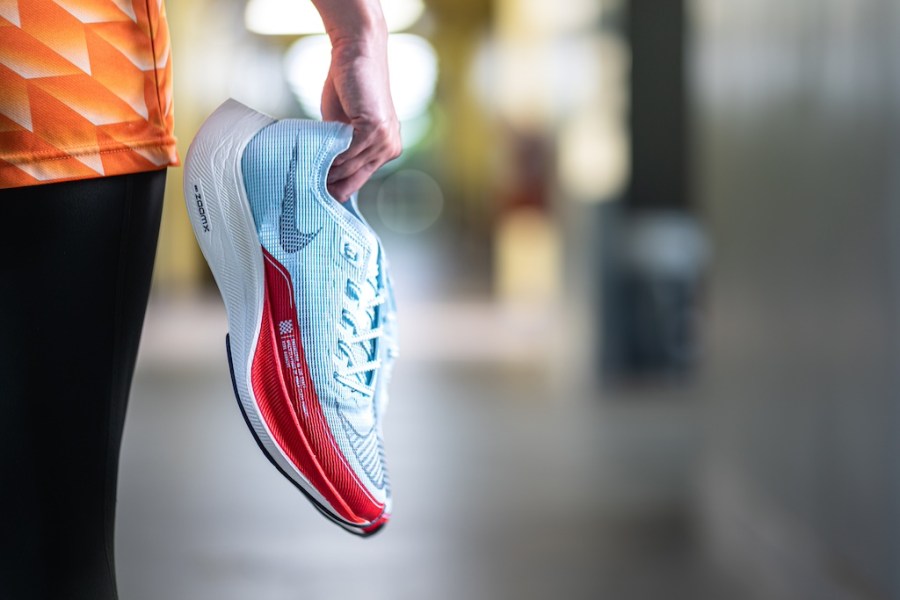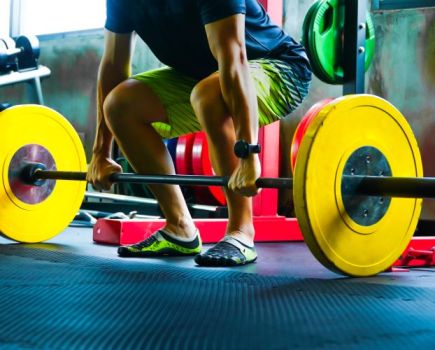Ultramarathon runner Kieran Alger explains what carbon plate running shoes are and, crucially, how they can improve your running.
If you’re about to run a marathon, a half marathon or shoot for a speedy personal best over any distance, the chances are you’ve probably considered investing in one of the best carbon-plated running shoes. Since Eliud Kipchoge started smashing records in the efficiency-boosting Nike Vaporfly 4%, every brand has launched its own speedy carbon racer, luring runners with the promise of faster splits and super performances.
But how do carbon plate running shoes really work? Are all plated shoes equal? And can any runner benefit from lacing up a so-called ‘super shoe’?
What is a carbon plate running shoe?
Broadly speaking, any running shoe with a carbon plate gets this tag. Most carbon plate running shoes – like the Saucony Endorphin Elite, the Adidas Adios Pro 3 and the New Balance SC Elite V4 – are primarily made for racing, over any distance from 5k up to the marathon and beyond.
However, I’ve seen carbon plates creeping into some heavier everyday trainers and easy day shoes, like the HOKA Mach X and the HOKA Bondi X. Many runners now use them for faster training runs and there’s a growing trend for carbon plate trail shoes that aim to balance structure, support and durability with the efficiency gains.
Carbon plate running shoes for the road combine three key elements: big midsole stacks of highly bouncy, springy and responsive midsole foam like Pebax found in Nike’s fastest shoes; a carbon plate somewhere in the midsole that stiffens the foam adds stability and acts like a bit like a lever; plus lightweight, minimal, race-ready uppers.
They also tend to be lightweight, most are under 250g while the average daily trainer tips the scales anywhere between 250g and 320g.
How do carbon plate running shoes work?
Carbon plate running shoes are designed to promote a more efficient running gait. Increased efficiency means less energy expenditure which translates to the ability to move faster, for longer.
People tend to focus on the carbon plate as the most important element in carbon running shoes but sticking a carbon plate into a poor midsole foam doesn’t make a good carbon shoe. You also need a hyper-responsive foam.
Foams like the Pebax found in Nike’s top carbon racers feature polymers that are highly efficient at storing energy when stretched and then returning that same energy when the stress is relaxed. That’s what creates the explosive feeling underfoot.
But those springy foams can be unstable. The carbon fibre plate helps to bring some stiffness and stability. It helps to compress and expand the midsole foam more quickly as well as acting like a lever when the foot strikes the ground. Curved carbon plates can also lift your heel faster to promote forward momentum.
In combination the plate and foam effectively store and release energy during the propulsion phase of your running stride. The result is more powerful toe-offs and increased forward propulsion, allowing you to maintain faster speeds with less effort. That’s the theory at least.
Are all carbon plate running shoes equal?
In short, no. The Nike Vaporfly 4% sparked the revolution when lab tests showed these plated racers could improve running economy by up to 4% – hence the name.
Then came the avalanche of rival supers shoes aiming to mimic that. However, subsequent research by Dustin Joubert, an assistant professor of kinesiology at St. Edward’s University in Austin found that not all new carbon running shoes offered the same efficiency gains as the Vaporfly 4%’s successor, the Nike Vaporfly Next% 2.
Joubert tested a range of carbon shoes from different brands and found that on average, carbon-plated shoes increased the running economy of the athletes by around 2.5%, but some shoes offered no benefits over a regular control shoe.
It gets more complicated, too. In more recent research, Joubert also found significant discrepancies in how carbon shoes impact performance between runners. Some ‘high responders’ get faster but others may see smaller or no improvements at all.
The runners who took part in the original Nike Vaporfly 4% study, for example, ran at speeds of 14–18 km/h aka 2:20-3:00 marathon pace. That’s fast.
Should you run in a carbon plate running shoe?
Not necessarily. Lots of factors come into play when you’re considering how a shoe might benefit your running. Height, weight, speed, running form – all of these things change the forces you put through the shoe when you run and subsequently how the shoe responds.
A 2019 New York Times study suggests there are gains to be had at a wide range of paces. The research looked at results from more than a million amateur races and found carbon-shod runners ran 4-5% faster than they would in an ‘average’ running shoe.
Another study by Joubert looked at the potential benefits for runners moving at slower paces. It found that while slower runners can benefit from lacing up super shoes, speed definitely makes a difference.
Those running in super shoes at about 8 min/miles saw their running economy improve on average by around 1.4%. Slower runners clocking 10 min/miles improved by just under 1%.
To put that into context, you’d save 2.6 minutes off a marathon time moving at 10 min/miles.
Are carbon plate running shoes worth the money?
Carbon racers cost a pretty penny. Even the cheapest carbon shoes start at £200 and with adidas recently launching a £300 running shoe, that price could well creep higher. Unless you’re competing for Olympic Gold, it’s probably smart to ask yourself, even if you’re likely to be a high-responder in a shoe that actually delivers those 4% efficiency gains, is it worth the investment?
People ran fast races perfectly well before carbon shoes arrived and the truth is you can still run your best in a regular non-plated running shoe.
There are also some excellent fast shoes that don’t have a carbon plate (the ASICS Novablast 4) and some that use a cheaper combination of super foam and nylon plate (the Saucony Endorphin Speed 4).
There are also other cheaper ways for keen amateurs to find that 4% improvement. Smarter training, better nutrition and even improving sleep can bring bigger benefits.
But the bottom line: the best shoes for any run are those you feel comfortable in. There’s no guarantee a less comfortable carbon shoe will speed you to your PB, but if lacing up a £250 racer makes you feel ready to conquer, go for it.






